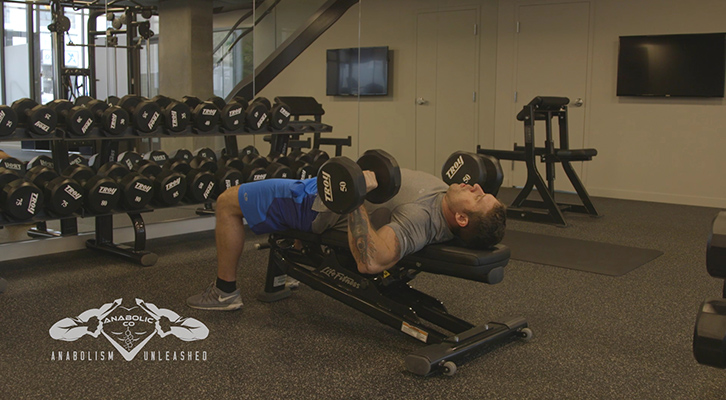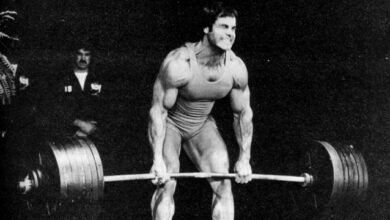Dumbbell Incline Fly vs Flat Fly

The dumbbell incline fly, though often incorrectly performed, are one of the best chest exercises you can do. It provides an excellent contraction, an even better stretch, and targets that all so important upper pec that is vital to creating good upper body aesthetics. However, how does the dumbbell incline fly compare to the flat fly?
When and How Should You Use the Incline Dumbbell Fly?
The dumbbell incline fly is an isolation exercise, so it’s best used at the end of your workout. Regardless of your level of experience, you’re going to always want to start your workout off with your compound movements and strength builders like flat/incline bench press variations and dips. However, when you’re ready to focus on muscle quality and separation, then it’s time to hit isolation movements. This makes the dumbbell incline fly a virtually perfect pec workout finisher.
Because they are an isolation exercise, incline flies are best treated as such. Keep the weight light to moderate, doing 2-4 sets of 12-15 reps. The goal here isn’t to go as heavy as you can, but rather to get the best quality reps you can. To do this, try to really maximize the mind-muscle connection (more on this in a second). Keep your reps slow and controlled, and emphasize the stretched position by holding it for a second or two at the bottom of the movement. Then at the top, hold again for a second or two, squeezing the pecs hard to maximize muscular contraction and quality.
Dumbbell Incline Fly, Flat Fly, and Shoulder Safety
If you’re going to compare the dumbbell incline fly and flat flies, the obvious first thing to mention is pec involvement. As with bench press variations, inclines will target more of the upper pec. Flat flies, on the other hand, will hit more of the overall chest with the emphasis being on the middle and outer pecs. No matter which version you do, one thing to be mindful of is the bottom position of the movement.
You want to get the stretch to bring the pecs out wider, but if you let yourself go out too far, you could strain a pec muscle or something in the shoulder. So be mindful. While both fly variations are isolation movements and should be treated as prescribed above, you can still push flat flies harder than you can the dumbbell incline fly. This is because at the angle your torso is at, your Shoulders are in a much more vulnerable position, increasing the potential for injury.
The mind-muscle connection was mentioned above and is advice that needs to be heeded if you’re going to avoid getting hurt. To maximize shoulder safety during the dumbbell incline fly, really try to arch your chest while setting up. You want to almost create a sort of “shelf” with your traps, rear delts, and upper back – this is what you want resting on the bench. In fact, your chest should be arched to the point that it almost looks flat/horizontal while lying back on the bench. This will create almost the perfect position for hitting the upper pecs.
Tips on Fly Movement Execution
Something else to note about either fly variation is that while performing your reps, lead with your pinky fingers. This will cue you to keep your hands rotated and palms facing each other. This is important because as you Fatigue, you may let your hands rotate the opposite direction, letting your palms begin to face more forward. This can shift emphasis from the pecs to the front delts.
Lastly, while you want to keep your arms in an arc, don’t let your elbows bend while performing your reps. If they do, you’re going to end up engaging the biceps, which isn’t what you want. Having/keeping a slight bend in the elbows is preferred, as it’d be awkward (and even dangerous) to keep your arms locked straight. You just don’t want to bend your elbows during the movement.
Both the dumbbell incline fly and flat fly are good movements, so you should choose the one that best suits your needs. Inclines will hit the upper pecs more, which is generally considered more aesthetic, while flat flies tend to hit the lower and outer pec more. Either way, keep a strong mind-muscle connection (especially with inclines) and concentrate on getting a strong contraction at the top of the movement. Do realize too that form breakdowns are more likely to lead to injury when doing the dumbbell incline fly as opposed to the flat version.




